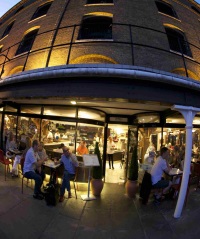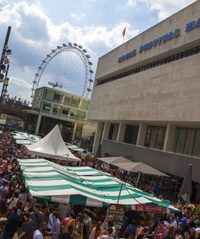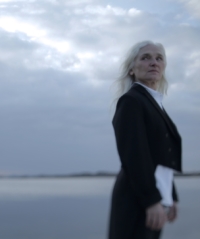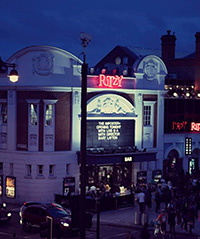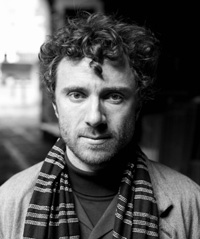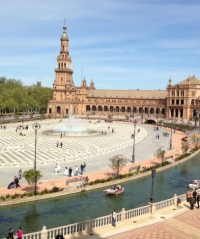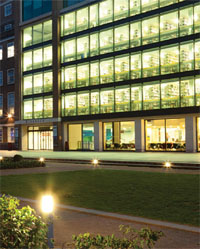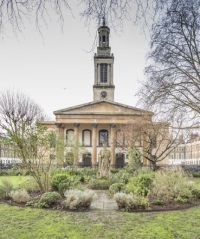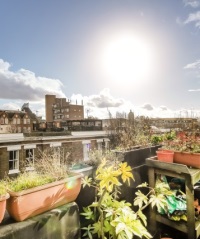standing proudly in Elephant and Castle, the creation of Erno Goldfinger and once closed due to ‘sick building syndrome’, Metro Central Heights sounds as if it’s been drawn straight from a sci-fi film. In fact, its history is rather comedic: designed by a Hungarian Modernist who was so despised that Ian Fleming borrowed his surname for the most infamous of Bond villains; built in the 1960s to house the Ministry of Health, it was shut down for having the mysterious ‘sick building syndrome’, before its inhabitants moved out to Hannibal House. The building then narrowly avoided demolition and was redeveloped in 1997, recovering from its illness and gaining 489 residential apartments, meeting rooms, a gym, jacuzzi and sauna in the process.
Goldfinger’s Brutalist style is not the most attractive to contemporary audiences, yet the building’s proximity to the City and the West End has now made it incredibly popular with young professionals – recently attaining the nickname Metrosexual Heights – and as Elephant and Castle becomes more established in the next decade, this appeal will only increase.
“Ian Fleming borrowed his surname for the most infamous of his Bond villains
It was actually Goldfinger’s unpopular design philosophy that saved this building from demolition; he focused upon ‘the permanent structure; the much less permanent services and an even more fleeting component, the human requirements’ in that order, denoting open plan, flexible space. This ethos quickly saw Goldfinger become a pioneer in British Modernist building, which was invaluable in the post-war period: with 4 million homes destroyed and demand rising fast due to the Baby Boom, sky-high reinforced concrete was a fast and effective answer. In fact, Goldfinger was unusually passionate about the aesthetics of bare concrete – even adorning his Hampstead home with concrete columns, much to the discontent of his neighbours.
Despite contention, Goldfinger’s ‘soulless’ architectural feats are here to stay as Metro Central Heights recently became Grade II listed, joining his Trellick Tower, North Kensington. These structures survive as solutions to post-war devastation, and whilst other examples of Brutalist architecture such the Barbican Estate are recognised as sites of special architectural interest, Metro Central Heights remains contested. The coarse grey of Trellick Tower is surrounded by greenery and Barbican stands as the only matte facade amongst the glimmering glass of the City, so perhaps all that is holding back Metro Central Heights from the status of a Modernist relic is its environment – Elephant and Castle’s chaotic road system being a challenging backdrop for any building.
Still, in the very near future, this backdrop will be almost entirely painted over: the neighbouring Heygate Estate will be demolished and replaced by one of London’s largest new parks; and the shopping centre which Metro Central’s residents currently look upon will be transformed. Although Goldfinger may not have been well-liked for his unconventional design, it repaired a city flattened in parts and supported the next generation; it is a testament to him that these quick-fixes are still standing, and providing for Londoners today.
-
A BOUNTIFUL Season
London’s hidden markets will excite even the most experienced of palates
Category: Food&Drink -
THE FINEST Ingredients
Discover the essential Italian flavours behind the success of Tentazioni Restaurant
Category: Food&Drink -
layers of TRADITION
A Mediterranean escape within London’s most idyllic marina
Category: Food&Drink -
a blackfriars BRUNCH
Home-cooked comforts at Café Pronto
Category: Food&Drink -
A LIFE in the day
A unique view from a Brixton Village tradesman
Category: Style -
A CINEMATIC revolution
The Ritzy Picturehouse’s century-long career at the forefront of ‘art cinema’
Category: Culture -
SWERVE OF SHORE to bend of bay
An interview with one of Ireland’s leading theatre-makers, and her photographer
Category: Culture -
AN INNOVATION in theatre
Stage meets screen for Sam Mendes’ ground-breaking production of Charlie and the Chocolate Factory
Category: Culture -
CHILDREN’S book review
For this edition Meg Connor-Scahill, aged 11, gives us her thoughts on the traditional children’s book Heidi, written in 1880 “for children and for those who love children” by Swiss author Johanna Spyri
Category: Culture -
RACING for charity
Nephew of The Shipwright’s Arms publican, Andy Bishop, undertakes a marathon challenge
Category: For The Soul -
SEDUCED by Seville
...Sweet orange blossom & Spanish guitar
Category: For The Soul -
5:2 Your Life
Category: For The Soul -
Fuel Your Body BETTER
How Metabolic Dieting can help you to avoid ‘starvation mode’ and stay both slim and strong
Category: For The Soul -
SET apart
Graphic display company Colorset underlines the importance of adaptation
Category: Style -
SANDRINGHAM House
Organic interiors, river-side views and high-tech finishing touches from award-winning design firm, Darling Associate
Category: Property -
OUR GREAT Thames
Joanna Lumley and Thomas Heatherwick lay plans for London’s very own floating garden
Category: For The Soul -
SPOTLIGHT Properties
CONTEMPORARY CONVERSIONS: Loft Living
Category: Property -
SPOTLIGHT Properties
A PERIOD Apartment
Category: Property -
SPOTLIGHT Properties
A REGENCY Residence
Category: Property -
GOLDFINGER'S Legacy
The enduring architecture of a post-war pioneer
Category: Property


